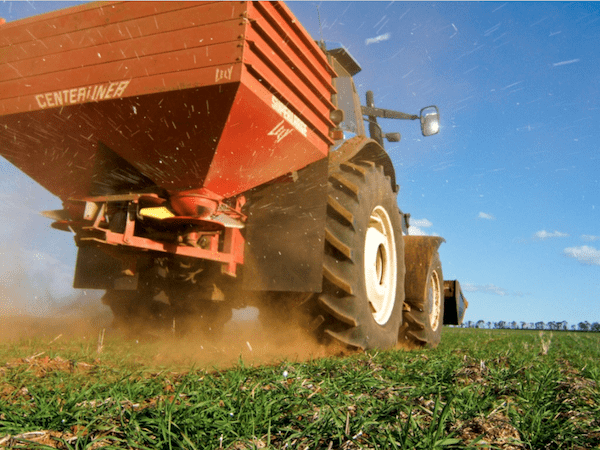In a dry year it can be prudent to make nitrogen (N) fertiliser decisions based on conservative estimates of crop demand and potential grain yield.
Researchers also advise that applications of N can be held off until later in the season, when environmental conditions and crop potential are more fully known.
John Angus, of CSIRO Agriculture and Food, said when making in-season N fertiliser decisions, the simplest and most frequently overlooked part of a crop N budget was plant demand.
He said, given the conditions unfolding for the 2017 winter growing season in Western Australia, this would vary widely across the grainbelt.
“So a good strategy is to commit funds for N fertiliser based on conservative estimates of crop N demand,” he said.
“This typically means two (or rarely three) N applications for wheat crops during a season.
“The first application can be at or before sowing, based on a test of soil mineral N levels, and the next can be at the start of stem elongation, when the density of plant shoots provides a good estimation of crop response to N.
“The rare third application, if warranted, is around the wheat booting stage and depends on a comfortable soil water profile, a confident expectation of rain and a high premium for grain protein.”
Dr Angus said crop demand for N could be estimated by multiplying the target grain yield by target protein and adding an allowance for the N content of the residual stubble.
He said this could be monitored during the growing season by checking plant appearance for any deficiency, assessing soil moisture levels and staying abreast of seasonal rainfall outlooks.
There are a range of grains industry-developed N budget calculators and tools that can help with fertiliser decision-making.
- These resources include:
N Broadacre – an iTunes app based on the grains industry-developed Select Your Nitrogen (SYN) model
NUlogic – Developed by CSBP and available with paid and accredited access
Yield Prophet® – Based on the industry-developed Agricultural Production Systems Simulator (APSIM) model
iPaddockYield – grower-developed iPhone and iPad app available through the iTunes app store
Green Seeker® – support system based on crop reflectance methods.
In WA, there is a ‘Tactical Nitrogen’ component in the ‘Tactical Wheat Agronomy for the West’ project being conducted by the Department of Primary Industries and Regional Development (DPIRD) – formerly DAFWA – with Grains Research and Development Corporation (GRDC) investment.
Results from the project have shown that yields of commonly used wheat varieties in this State typically respond more to N rates, rather than timing of N application. But this depends on the conditions for plant growth and N uptake.
DPIRD research officer Dion Nicol said there were six tactical N trial sites set up in 2015 and three in 2016 through the ‘Tactical Wheat Agronomy for the West Project’ and this year he has established sites at Binnu, Mingenew, Wongan Hills, Lake Grace and Grass Patch.
“Our research is showing there is a reasonably wide window for timing of N applications,” he said.
“In Wongan Hills and Mingenew in 2016, trials at both sites found no yield penalty when there was a single application of 50 units of N/hectare after first node crop stage.
“While these plots had less biomass and tillers than those plots that had earlier N timings, there were adequate wheat heads to achieve yields of about 2.5-3.5 tonnes per hectare at both sites.”
Past research by DPIRD researchers has also indicated that wheat crops with low plant densities can actually have later critical times for N application, but low plant densities are likely to penalise yield in later establishment.
Dr Nicol said growers this year are urged to watch for stressed crops running up early without later tillers coming through, as these may not be responsive to additional inputs of N if more rainfall occurs.
“Even in wetter seasons, many paddocks across WA are not yield-responsive to applied N,” he said.
“While the DPIRD experiments explore how growers can most profitably and flexibly build yield potential in their wheat crops, determining paddock N requirements and grain yield targets are still most important.
“Using N-rich strips can help to identify any crop N deficiencies, and general ‘rules-of-thumb’ derived from historic studies of soil types and paddock history can assist growers to focus their inputs, such as N.”
Dr Nicol said across much of WA this season, dry conditions have dominated and this means applications of pre-emergent herbicides are potentially being compromised or lost.
He said if the season was to turnaround notably, where there were stubbles with high weed burdens from 2016, dealing with weeds was likely to be a higher priority for growers than N applications in coming weeks and months.
“This is especially considering the lower N response typically found in later-emerging crops, dry soil profiles across much of the grainbelt, moisture-stressed crops and the legacy of weed seed set that could compromise opportunities in future seasons,” he said.
Source: GRDC


HAVE YOUR SAY